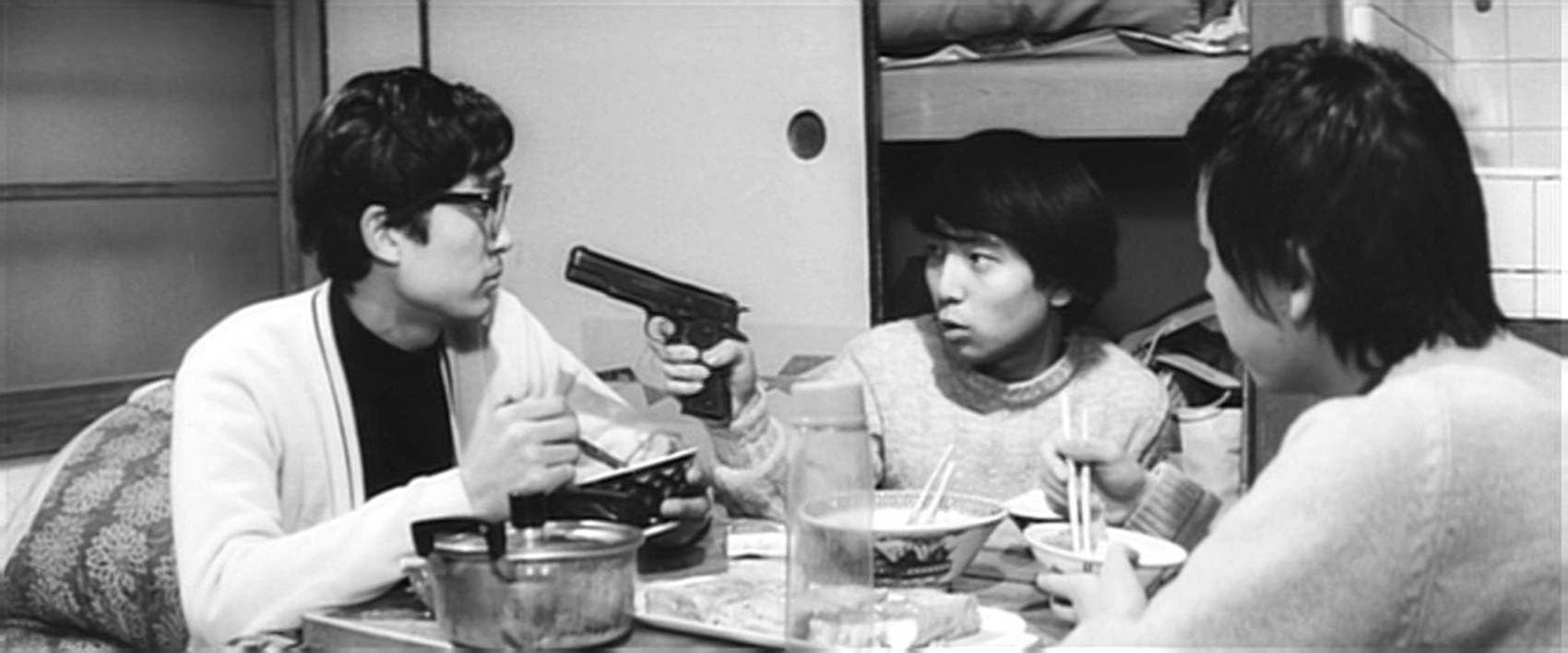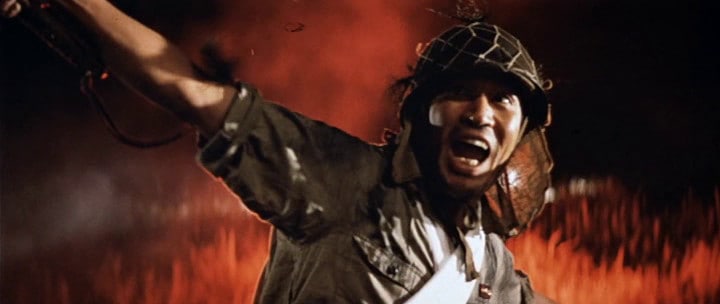Number 146 on Kinema Junpo's 2009 list of Top 200 Japanese Films of All Time, “Violence Without a Cause” is one of the 11 movies Wakamatsu shot in 1969 and an ode to the way exploitation can be used for social commentary.
Buy This Title
Three 19-year-old men from Aomori, Harada, Matsumoto and Osawa, live together in a small room in Tokyo, despite their different financial backgrounds, which have one working to make a living, one receiving a significant allowance from his family and one a miniscule one. The three are not friends by any chance, and the sole thing they seem to have in common is their tendency to whine about not having money, girlfriends, and constantly being bored. Riding home on a train one evening, they decide to go to the beach, where they have a fight that becomes violent briefly, just before they stumble upon a couple, whom they proceed on attacking, raping the woman and forcing the man to have sex with her while they take pictures. The next day, they insult students demonstrators at the university Matsumoto is studying, while they spent most of their time in the house watching porn magazines and peeping on the couple having sex in the next room. The appearance of two women, Chieko Yoshinaga, an elementary school friend of the three who now works as a hostess in a Tokyo nightclub, and a model from the porn magazines, makes things quite complicated for them.
Koji Wakamatsu directs a film that works on two levels, one obvious and one almost metaphoric one. The first one, as “Violence Without a Cause” is presented as a pinku movie in theory, includes sex, voyeurism and violence, with the last aspect highlighting the true nature of the obvious level of the movie, that of exploitation. In that regard, almost every sex begins from or ends up in violence, with the apathy the three young men indulge in rape being almost chilling. The voyeuristic (peeping essentially) element is also quite intense, with Wakamatsu including two rather lengthy scenes where the protagonists are watching people have sex from a peephole in their closet. At the same time, and although the women in the movie are quite beautiful and sexual, there is very little sensualism here, since Wakamatsu seems not to be interested in titillation, but instead on using sex to present his social comments (and because he was forced to, according to the rules of the pinku).

This aspect brings us to the second level of the movie, that focuses on the disillusionment of the then youth, and the way the successful financially but bankrupt socially and politically Japanese society of the time turned them into nihilists, essentially animals who are driven solely from their (sexual) instincts. At the same time, and particularly with the way the finally episode of the narrative unfolds, Wakamatsu also shows how society perceived the youths of the time, and the reasons they fell victims of their “regularity”, since they were not tough or desperate enough to become yakuza, but are also not important enough for the law to take them seriously.
In that fashion, and although Wakamatsu does not justify their actions in any way, he seems to explain the reasons behind them, with the lack of guidance from both families and society being the reasons behind their nihilism and the subsequent desperation.

Although obviously extremely low-budgeted, “Violence Without a Cause” highlights the prowess of both Wakamatsu and DP Hideo Ito's in the visual aspect of the production. The voyeuristic sequences, but also the combination of long shots on the exterior scenes and the close ups on the interior ones are impressive, with the two of them not staying away from either sex or violence, managing, however, to present the latter through the sense of detachment that also characterizes the protagonists. Isamu Nakajima's editing implements the episodic nature of the narrative quite nicely, through a pace that is occasionally slow (during the sex scenes) and occasionally fast (during the rest). Also of note is the music, with the juxtaposition of psychedelic rock and enka songs (occasionally sung by the protagonists) adding much to the entertainment the movie offers.
Undoubtedly, there is much misogyny present here, but in general, the film manages to rise above both this and its soft-porn premises, resulting in a testament to the fact that pinku movies were frequently used as vehicles for the presentation of serious sociophilosophical critique and of being productions of high artistic value.
















